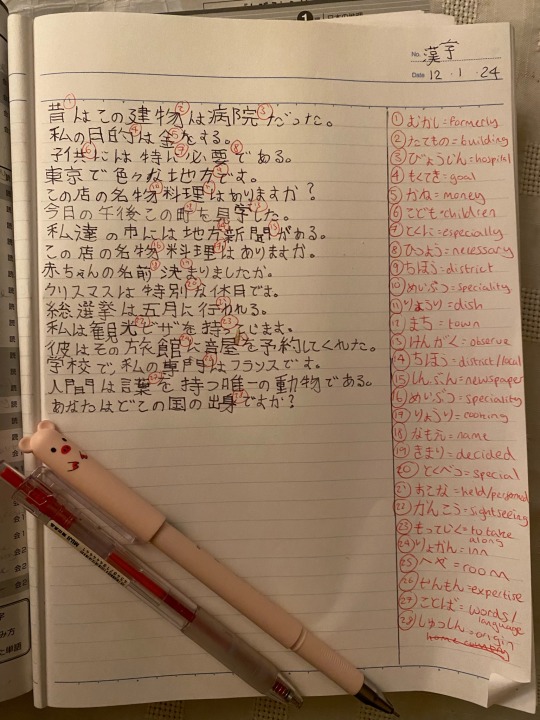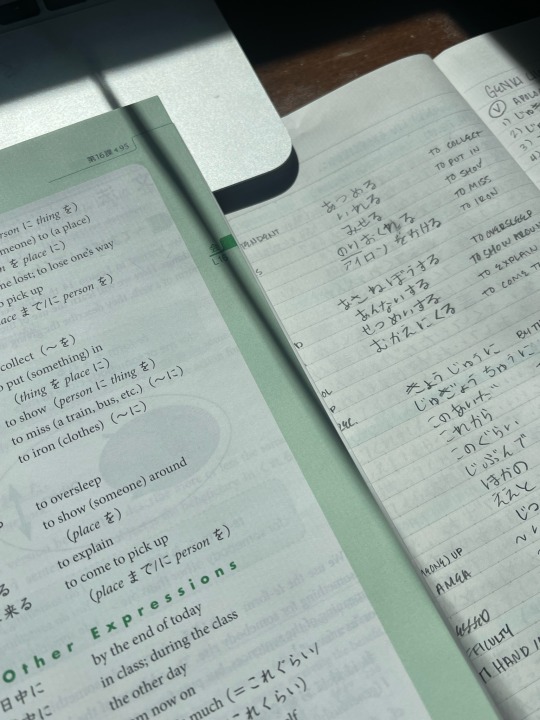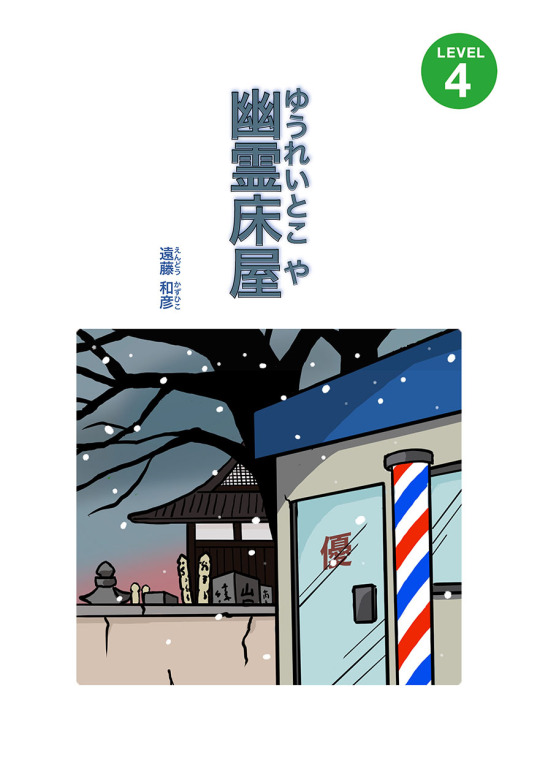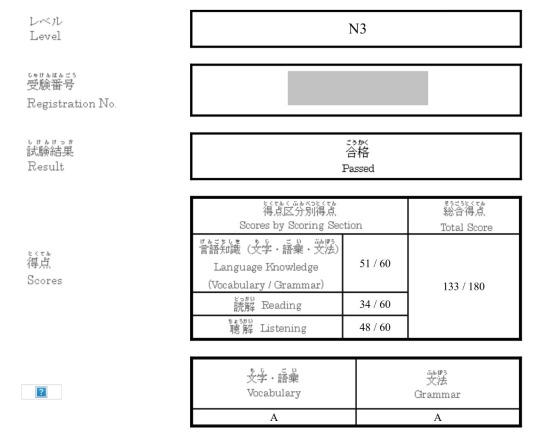#jlpt n3
Explore tagged Tumblr posts
Text
The 6 Differences Between は and が
DIFFERENCE 1
The important fact is AFTER は
• この犬は私のぺットです。This dog is my pet.
You want to emphasize that this is not a stray dog. It is not someone else's pet dog. It is MY PET. So anything comes after は is the main part you want the listener to pay attention to.
The important fact is BEFORE が
• この犬が私のベットです。This dog is my pet.
You want to emphasize that THIS IS THE DOG that is my pet. Not other dogs. Imagine you're at a park and there are 3, 4 other dogs playing together with your dog and you want to tell your friend that THIS DOG is the one that is your pet dog, other dogs are not yours. So, what comes before が is the main part you want to tell the listener.
More examples:
• このケーキはおいしいです。This cake is DELICIOUS! (You want to tell your friend that this cake is indeed very good. Your emphasis falls on おいしい, so you use は, because the important fact is AFTER は.
• このケーキがおいしいです。THIS CAKE is delicious. (You want to tell your friend that among all the cakes on the buffet table, this particular cake you are pointing to is the most delicious one. Others are not good.) Your emphasis falls on このケーキ (THIS CAKE), so you use が, because the important fact is BEFORE が.
DIFFERENCE 2
New information and things that you mention for the first time, use が. Old information or topics that have been mentioned earlier but is now repeated again, use は.
• 学校にマイクという男がいます。There is boy named Mike in my school.
You started the conversation with your friend by saying there's a new student named Mike in the school. That is the first time you mentioned Mike. It is new information, therefore use が.
• マイクはアメリカ出身です。Mike is from America.
You mention Mike the 2nd time now and it is no longer a new information. It is considered old information, therefore use は.
DIFFERENCE 3
Stating facts without adding your personal opinion or judgment use が. By adding your own opinion or judgment, use は.
• 外に猫がいます。There is a cat outside.
You are just merely stating a fact that there is a cat outside. This sentence doesn't include your description about the cat. No personal opinion or judgment about the cat.
• あの猫は白いです。The cat is white in colour.
You are putting your description, your judgment into the sentence about the cat. When you are adding your own thoughts, opinion, description about something, use は.
• 日本の料理はおいしいです。Japanese food is tasty.
You are putting your opinion/judgment about Japanese food in your sentence, therefore, use は.
DIFFERENCE 4
When you make comparison, use は. When you eliminate other options, use が.
• お茶は好きですが、コーヒーは好きじゃありません。I like tea but I don't like coffee.
DIFFERENCE 5
If two actions are done by the same person, use は. If two actions are done by two different persons, use が first, then use は for the second action.
• 私はごはんを食べるとき、テレビを見ます。I have my meal and I am watching TV.
• 私がごはんを食べるとき、父はテレビを見ます。When I have my meal, my father watches TV.
DIFFERENCE 6
To modify a phrase into a noun, use が.
• これは彼女が作ってくれたケーキです。
What cake is this? This is the cake that is baked by my girlfriend. The phrase 「彼女が作ってくれた」 is to modify the cake, to describe about the cake.
Quiz Time
• 部屋は広いです。
• 部屋が広いです。
In English, both sentences mean "The room is spacious." But what is the difference?
In 部屋は広いです, it shows a comparison contrast nuance (read DIFFERENCE 4). If you say this, the listener will believe that you are making a comparison of this room with all the other rooms in the house. You want to say this room is spacious, whereas the other rooms are smaller in size.
In 部屋が広いです, you are merely stating a general fact about this room being spacious (read DIFFERENCE 3). You are not making any comparison. Your sentence has no added personal judgement or opinion. You are stating a fact about the room being spacious.
#japanese#nihongo#studyblr#study blog#study japanese#study motivation#learning#learn japanese#language#grammar#jlpt#jlpt n5#jlpt n4#jlpt n3#jlpt n2#jlpt n1
520 notes
·
View notes
Text
お知らせや案内を読もう
Vocabulary for reading notices and information.
お知らせ おしらせ notice; notification
案内 あんない guidance; information; notice
日時 にちじ date and time (of a meeting, notice, etc.)
上旬・初旬 じょうじゅん・しょじゅん the first 10 days of the month
中旬 ちゅうじゅん the middle 10 days of the month
下旬 げじゅん the last 10 days of the month
第#〇曜日 だい#〇ようび the #nd/th 〇day of the month (e.g. 第2月曜日 = だいにげつようび = the second Monday of the month)
年末年始 ねんまつねんし the year-end and the beginning of the New Year (usually holidays in which businesses and the government are closed)
正午 しょうご noon
祝日 しゅくじつ national holiday
休館日 きゅうかんび day on which a museum, library, etc. is closed; closed day
ただし however (used when an exception is given) 「だだし、…」 は例外と言うとき
なお further (used when an explanation is added) 「なお、…」 は説明をつけくわえるときに使います

向かい むかい across from/opposite
ななめ向かい ななめむかい diagonally opposite
向こう むこう across from/opposite/beyond
手前 てまえ before
角 かど corner
四つ角 よつかど crossroads
交差点 こうさてん intersection
有料駐車場 ゆうりょうちゅうしゃじょう paid parking lot
つきあたり the end of
前方 ぜんぽう ahead
後方 こうほう behind
右折する うせつする to turn right
左折する させつする to turn left
徒歩 とほ on foot
面している めんしている facing
一方通行 いっぽうつうこう a one-way street
横断歩道 おうだんほどう a pedestrian crossing; crosswalk
#日本語#japanese#japanese language#japanese langblr#japanese studyblr#langblr#studyblr#japanese vocabulary#語彙#単語#jlpt n3#tokidokitokyo#tdtstudy
185 notes
·
View notes
Text
やばい Alternatives | Vocab
Step 1 of 「伝える力」 が伸びる! 12歳までに知っておきたい語彙力図鑑 focuses on teaching you synonyms for words you would typically use to describe your emotions. There are synonyms for words like やばい, エモい, and the like. This particular post will focus on the information that they've given about やばい。
The book also ranks the words' difficulty level, with 1 star being an "of course you know this" to 5 stars being "even adults probably don't know this and you're about to blow them away with your vocabulary and make them pull out their dictionary." Because of this, you may see words that you encountered quickly as a Japanese learner (that a native speaker 12 year old may not have encountered yet) and vice versa on the list below.


やばい
Because やばい is a word that can be used to express nearly any emotion (much like how OMG can be used in many contexts in American English), the book did also make sure to put the contexts in which the alternative word would be appropriate.
危うい (あやうい)- dangerous; in danger; facing imminent danger ❖This is to be used when dangerous situations are imminent. The way they described it was "危険が迫っている状態" ▶︎Their example: 危うい所でピンチを脱出した。
危険 (きけん)- dangerous; risky; uncertain; precarious; in danger ❖This is to be used when a situation may lead to not-so-good/dangerous outcomes. ▶︎Their example: そんなに高い所からジャンプしたら、危険だよ。
驚異的 (きょういてき)- wonderful; astounding; marvelous ❖This is to be used when something passes a level of surprise that you can express. ▶︎Their example: 大谷選手の達成した記録は驚異的だ。
最高 (さいこう)- best; supreme; wonderful; highest; maximum; supreme ❖This is to be used when describing something of the highest status/dignity/ranking. (This is relative in comparison to other things.) ▶︎Their example: 夏休みに友達と見に行った映画が、最高に面白かった。
素晴らしい (すばらしい)- wonderful; splendid; magnificent ❖ This is used to describe something that's elegant/praiseworthy/splendid, things that are desirable, and things that admirable. ▶︎Their example: 富士山の山頂から眺める景色は、息をのむほどに素晴らしい。
Yojijukugo (四字熟語)
This section also includes four-character compound idioms (yojijukugo) that can be associated with the word we're focusing on expanding our vocabulary from.
絶体絶命 (ぜったいぜつめい)- desperate situation with no escape; being driven into a corner; being cornered; last extremity ❖ You would use this when you find yourself in a situation that there's no conceivable way you could think of making it out in the way that you truly desire. ▶︎Apparently you can use it in phrases like this 「絶体絶命のピンチ」 BONUS: I found an example online that also uses it to mean "stalemate" and the example is a cop and a suspect both pointing a gun at each other.
最上無二 (さいじょうむに)- there is nothing else like it in this world; it's an unparalleled marvel ❖They listed this one at 5 stars (aka, the adults are gonna be surprised that you know this and also go look it up) and I can certainly see why--I couldn't find any official English translations of it. Here's the definition the book gave: この世に二つとなく、最もすばらしいこと。「最上」は最もすぐれていること、「無二」は同じ物がないことを意味するよ。
SOMEONE PLEASE CORRECT ME IF MY UNDERSTANDING OF THIS LAST YOJIJUKUGO IS INCORRECT SO THAT I CAN LEARN IT PROPERLY!! I BESEECH THEE!! I IMPLORE YOU!!
Anyways, the next post will be alternatives words for かわいい and エグい
#vocab#japanese#japanese vocab#mine#learn japanese#kanji#jlpt#jlpt prep#jlpt n2#jlpt n1#jlpt n3#jlpt n4#jlpt n5#learning through reading#learn through immersion#reading comprehension#look toki#onigiristudies#jpnstudynet
101 notes
·
View notes
Text
Knowledge of the Japanese Language Proficiency Test (JLPT) and NAT Scoring Systems
The Japanese Language Proficiency Test (JLPT) and NAT exams are two of the most widely recognized language proficiency tests for Japanese language learners. Both exams are designed to evaluate the language skills of non-native Japanese speakers, but they have distinct scoring systems that can be confusing for test-takers. In this article, we'll delve into the details of the Japanese Language Proficiency Test (JLPT) and NAT scoring systems, helping you understand how to interpret your scores and set realistic goals for your language learning journey.
JLPT Scoring System
The Japan Foundation and Japan Educational Exchanges and Services (JEES) administer the JLPT, which is available in five levels: N1, N2, N3, N4, and N5. The test evaluates language skills in three areas: language knowledge (vocabulary), reading, and listening. The scoring system is based on a scale of 0 to 180 points, with 100 points required to pass.
N1: Advanced level, requiring a high degree of language proficiency (100–180 points)
N2: Upper-intermediate level, requiring a good command of Japanese (100–180 points)
N3: Intermediate level, requiring a moderate level of language proficiency (100–180 points)
N4: Elementary level, requiring a basic level of language proficiency (100–180 points)
N5: Basic level, requiring a limited level of language proficiency (80–180 points)
NAT Scoring System
The NAT exam, administered by the Tokyo University of Foreign Studies, is designed for students who wish to study at a Japanese university. The test evaluates language skills in four areas: vocabulary, grammar, reading, and listening. The scoring system is based on a scale of 0 to 400 points, with 240 points required to pass.
Level 1: Advanced level, requiring a high degree of language proficiency (360–400 points)
Level 2: Upper-intermediate level, requiring a good command of Japanese (280–359 points)
Level 3: Intermediate level, requiring a moderate level of language proficiency (240–279 points)
Level 4: Elementary level, requiring a basic level of language proficiency (200–239 points)
Level 5: Basic level, requiring a limited level of language proficiency (0–199 points)
Key Differences
While both exams evaluate language proficiency, there are key differences in their scoring systems. The JLPT has a more nuanced scoring system, with a greater range of points available for each level. In contrast, the NAT exam has a more straightforward scoring system with a clear distinction between levels.
Tips for Test-Takers
Understanding the scoring system is crucial for setting realistic goals and developing an effective study plan. Here are some tips for test-takers:
Familiarize yourself with the exam format and content.
Set specific, achievable goals for each section of the exam.
Practice with sample questions and mock tests to improve your time management and test-taking strategies.
Focus on your weaknesses and allocate more study time to those areas.
In conclusion, understanding the Japanese Language Proficiency Test (JLPT) and NAT scoring systems is essential for language learners who wish to demonstrate their proficiency in Japanese. By recognizing the differences between the two exams and setting realistic goals, you can optimize your study plan and achieve success in your language learning journey.
33 notes
·
View notes
Text

A new way I’ve been practicing 漢字 that I saw done by @uuuuujin on tiktok ! You write sentences using the kanji you want to learn, then number the kanji and write it in the column down the side. Then you go back and practice reading the sentences covering the answers. I’ve found this really helpful!!
#japanese#language learning#studyblr#日本語#japan#study kanji#learn kanji#learn japanese#nihongo#jlpt n3
129 notes
·
View notes
Text
Learning a new kanji today (from JLPT N3)
美
ひらがな: うつく
meaning: beauty

I think this is a beautiful (heh, get it?) Kanji that means beauty. Generally it is used as - 美しい - which means beautiful both as artiscially and in apperance. きれい (Ki-re-i) also means beautiful in apperance but it could also mean clean and/or neat depending on context. Therefore, 美しい is generally used to describe a deep admiration of something that is asetheically pleasing.
One of my favroutie use of this words (and where I picked it up from), is from Gintama:
美しく最後を飾り付ける暇があるなら、最後まで美しく生きようじゃねか。
( うつくしくさいごをかざりつけるひまがあるならさいごまでうつくしくいきようじゃねか。)
romanji: Ustsukushiku saigo o kazaritsukeru hima ga arunara, saigomade ustukushiku ikiyouja ne ka
meaning: If you have time to fantasize about a beautiful end, then just live beautifully 'til the end.

kanji source: here
#japanese#learning japanese#japanese vocabulary#japan#hiragana#kanji#learn japanese#langblr#gintama#gintoki sakata#katsura kotarou#beautiful#jlpt n3#japanese vocab#vocabulary
17 notes
·
View notes
Text


when am i not studying ☕️🏹🏛️
#studyblr#study blog#langblr#langblog#japanese langblr#japanese language#japanese#studyinspo#study motivation#study aesthetic#jlpt n3#jlpt#jlpt n5#jlpt n4#japanese kanji#studystudystudy#exam study#study buddy#study hard#study#study notes#study space#coffee aesthetic#coffee order
91 notes
·
View notes
Text
Chances are pretty good that I'll be able to take the JLPT N3 exam next year in December, so let's revive this thing here!
#japanese langblr#jlpt n3#(about a year then but still)#(can i use this as an excuse to buy more novels? absolutely!)
9 notes
·
View notes
Text
Japanese langblr update!
I passed my J.Test and got D level which is JLPT N3 level!!!
Full marks is 700 so I only got 79.7% but for real, I'm so happy about it!! Road to N2! :3

#j.test#j test#japanese test#japanese langblr#japanese studyblr#achivement#langblr#studyblr#100 days of productivity#japanese language#jlpt study#jlpt#jlpt n3#wheeeee!!!
26 notes
·
View notes
Text
Kanji of the day: 願
願 - Petition, request, vow, wish, hope
Kun: ねが.う、-ねがい On: ガン (Pinyin: yuàn | yuan4 )
Pictophonetic: 原 represents the sound (pinyin yè | ye4, xié | xie2), 頁 (head) represents the meaning
The 頁 radical is most often referred to as the "leaf radical" (or in japanese it's referred to as 大貝 / おおがい "big shell" radical, assumedly due to its similarity to the 貝 shellfish radical) and means "page" or "leaf", but it originally meant "head"! Due to identical pronounciations, 頁 was adopted as an easier variant writing of 葉 (leaf), and this meaning has now completely eclipsed the original one. 首 (head) would be left behind to fill the hole. (Notice the similarities between 首 and 頁 )
However, this change happened too recent and too fast for other kanji to catch up! So when you see the 頁 radical as a meaning component in a kanji, it most likely means head. Either it refers to the head directly (as in 頭 Head, 顔 Face, 顎 Jaw, and 頬 Cheek), or refers to whatever goes on inside of it (頑 Stubborn, 順 Obey, and - in this case - 願 Wish, desire)
Strokes: 19 Radical: 頁 leaf
17 notes
·
View notes
Text
[N3] 幽霊床屋(ゆうれいとこや)


The NPO Tagengo Tadoku Level 4 graded readers are written for learners at the upper end of the JLPT N3 proficiency level. I've recommended this story about a supernatural encounter in a barbershop on here before. It's one of my favourites because it follows the typical structure of a short story, but only uses grammar points that a learner will already be familiar with.
#my book reviews#reading in japanese#study japanese#learning japanese#日本語#japanese books#やさしい日本語#free japanese reading resources#downloadable pdf#earthquake#easy japanese#Endou Kazuhiko#free reading material#ghost story#ghosts#JLPT N3#N3#natural disaster#NPO Tagengo Tadoku#3/11#blog post#wordpress blog
8 notes
·
View notes
Text
The Difference of それに、それでは、それで、それでも
1. それに = on top of that; in addition...
• このレストランは料理が美味しい。それに、値段も安い。
This restaurant serves delicious food. On top of that, the price is cheap too.
---------------------------------------------------
2. それでは = and so ...; and now...
• それでは、次の議題に移りましょう。
And so, let's move on to the next topic.
---------------------------------------------------
3. それで = so; therefore...
• 昨日は大雨が降った。それで、試合は中止になった。
Yesterday it rained so heavily. Therefore, the game was cancelled.
---------------------------------------------------
4. それでも = even though A, but still wanna do B; Despite..., but he still...
• 雨が降っている。それでも、彼は出かけるつもりだ。
It is raining. But he still intends to go out.
#japanese#jlpt#jlpt n1#jlpt n2#jlpt n3#jlpt n4#jlpt n5#language#learn japanese#nihongo#study blog#studyblr#study tips#study japanese#immersion#foreign languages#language lover#learning languages#learnsomethingneweveryday
233 notes
·
View notes
Text
間違えやすい「以」から始まる言葉
Vocabulary beginning with 以 that may be tricky

以前 いぜん prior to X
2020年以前 2020ねんいぜん prior to the year 2020
以上 いじょう X or more
4人以上のグループ 4にんいじょうのグループ a group of 4 or more
以内 いない within X
5日以内 いつかいない within 5 days
以後・以降 いご・いこう after X
10時以後・10時以降 10じいご・10じいこう after 10 o'clock
以下 いか X and under
30歳以下の女性 30さいいかのじょせい women 30 years old or under
Bonus Vocabulary:
未満 みまん less than X
14歳未満の少年 14さいみまんのしょうねん boys under 14 years old
#日本語#japanese#japanese language#japanese langblr#japanese studyblr#langblr#studyblr#japanese vocabulary#語彙#単語#jlpt n3#tokidokitokyo#tdtstudy
141 notes
·
View notes
Text
Vocab pt. 1 | 「伝える力」が伸びる! 12歳までに知っておきたい語彙力図鑑


I've recently started reading 「伝える力」が伸びる! 12歳までに知っておきたい語彙力図鑑 (or what I only refer to as "Words You Ought to Know as a 12-year old") as a means to up my vocab game before the JLPT.
I'll probably post a review about the book once I actually finish it.
But in the meantime, here are some of the words that I learned just from reading the sections about how to use the book and all 5 of it's sections. I was quite pleased at the amount of words that I've already learned (and how many of them were N2 words).
語彙力 (ごいりょく)- (the extent of) one's vocabulary
図鑑 (ずかん)- field guide; illustrated reference book
目指す (めざす)- to aim at (for; to do; to become); to try for
各 (��く)- each, every, all [prefix]
繰り返す (くりかえす)- to repeat; to do over again
基礎 (きそ)- foundation; basis
言い換える (いいかえる)- to say in other words; to put another way; to rephrase
言い換え (いいかえ)- putting in other words; paraphrase; rephrasing; rewording
状況 (じょうきょう)- state of affairs; circumstances; situations; conditions
鍛える (きたえる)- to drill; to train; to discipline; to forge; to temper
変換 (へんかん)- change; transformation; conversion
観察眼 (かんさつがん)- observing eye
目の付け所 (めのつけどころ)- focus of one's attention; what one is looking for; viewpoint; point one is trying to make
文豪 (ぶんごう)- literary master
候補 (こうほ)- candidate; contender; prospect; pick; choice; list
まつわる- to be related; to concern; to be associated with
登場 (とうじょう)- entrance; appearance; arrival
表現 (ひょうげん)- expression; representation; description; representation (of a group)
解決 (かいけつ)- settlement; resolution; solution
ワンパターン - following a single pattern; conforming to the same pattern; repetitive; stereotyped; predictable [Wasei-eigo]
Hopefully, I'll be able to consistently post some of the vocab lists that I continue to compile for this. I'm in the Step 1 section of the book where it gives you synonyms and explains the connotations behind them/situations in which to use them. The first section I read was for やばい~
#vocab#reading comprehension#jlpt prep#jlpt n2#mine#onigiristudies#japanese#look toki#japanese vocabulary#japanese vocab#japanese vocab list#learn japanese#study japanese#jpnstudynet#polyglot#jlpt#jlpt n3
78 notes
·
View notes
Text

I WAS SO NERVOUS OMG
#student#studyblr#australia#languages#japanese#jlpt n3#jlpt#japanese language#i-passed!#exam season#exams#omg#totally had low blood sugar after the exam#JLPT results#results
8 notes
·
View notes

